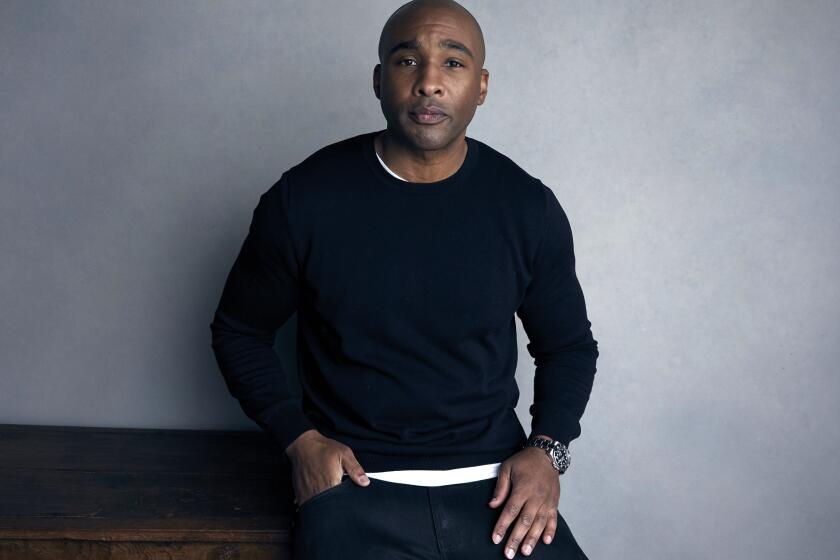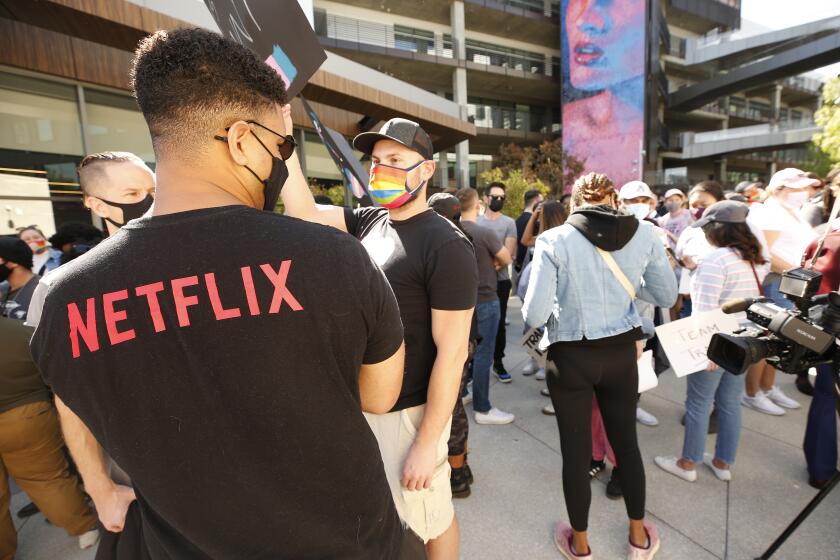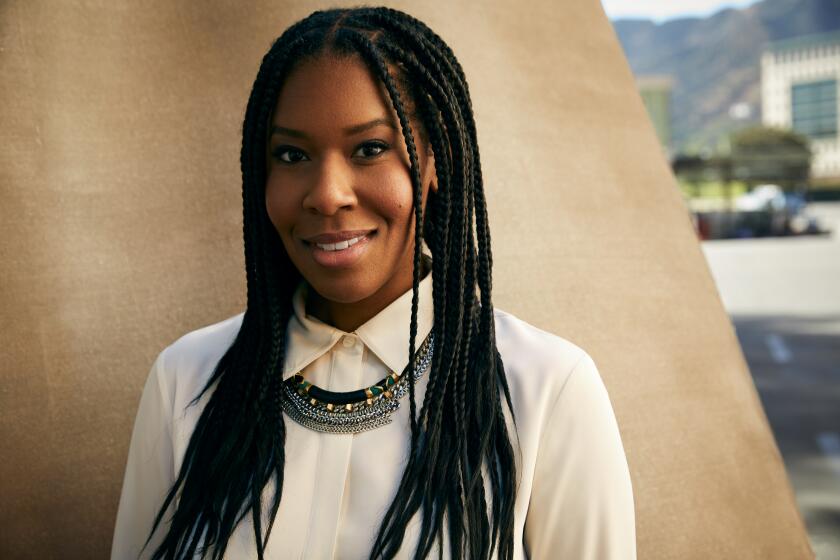Are Hollywood movies backsliding on diversity? What the latest numbers say

- Share via
Despite efforts made by Hollywood movie studios to diversify talent following George Floyd’s murder three years ago, people of color remain underrepresented in films, going by the latest numbers.
In fact, in some aspects, the diversity stats last year fell behind 2019 levels.
White people represented 78% of the lead actors in the top movies released in theaters in 2022, up from 72.4% in 2019, according to the newest UCLA Hollywood Diversity Report, which was released Thursday.
Screenwriter diversity also stagnated. Among the top theatrical releases, the share of films with a writer of color decreased to 12.4% last year, down from 13.9% in 2019.
A review of senior leadership at the six major media companies shows that the top ranks remain overwhelmingly white.
As studios grappled with the pandemic, fewer films were released in theaters as many people sheltered at home and sought streaming services to entertain themselves. The smaller number of movies limited the opportunities for people of color to lead those films, according to the experts behind the study.
The cultural reckoning sparked by Floyd’s murder inspired studios to announce increased efforts to raise the profile and increase the pipeline of underrepresented groups working in movies and TV.
But as studios and streamers look to trim expenses to make their businesses more profitable, diverse programming and content have been hit through cancellations and layoffs. That trend has sparked concerns that some of the gains made by people of color will be lost.
Studios are “going to take the safe route and go with quote, unquote ‘surefire’ hits, and that’s just code for less diversity, more nostalgia, more white-led films and content,” said Ana-Christina Ramón, director of the Entertainment and Media Research Initiative at UCLA and one of the report’s authors.
The report examined 89 of the top English-language theatrical films based on box office data and 100 of the English-language films primarily for streaming based on Nielsen household ratings in 2022.
The slowness to change stems from a lack of diversity at the top of the studios, the researchers said. The people making executive decisions continue to be mostly white men, said report co-author Darnell Hunt, UCLA’s executive vice chancellor and provost.
“There’s this sort of inertia in the industry to go with what people are comfortable with, and that’s one of the reasons we’ve been arguing for years, if we are really going to turn a corner in terms of diversity, we need to diversify the executive suites ... and we haven’t made a lot of progress there at all,” Hunt said.
Nonetheless, there were a few areas of improvement. The share of white directors helming theatrical films dropped about two percentage points to 83% in 2022 from 2019.
As the streaming wars heat up, Netflix is not just aiming for big name directors, but also making an effort to support first-time filmmakers. It’s part of a long-term strategy to build the company’s feature film business.
Movies made for streaming services — such as Netflix and Amazon’s Prime Video — tended to do better on diversity. For example, the percentage of female lead actors in streaming was 48.5%, nearly at parity with the population. The percentage of female lead actors in theatrical films, however, took a step backward. In 2022, women represented 38.6% of lead actors in movies released in theaters, down from 44.1% in 2019.
Streaming services also had a higher number of directors of color, with whites representing 77%, according to the report, compared to 83% in theatrical. But those movies directed by people of color tended to have smaller budgets, the report said.
For female directors, the numbers were even more dire, with just 14.6% representation in theatrical films and 25% in streaming movies.
“Although the film industry has had to quickly evolve the past few years, at its core, it remains the same exclusive club for White male directors,” the UCLA report said. “In the end, women and people of color have to be exceptional to survive in the industry, while White men are afforded many more opportunities to thrive.”
While nonwhite actors represented a growing percentage of total roles (both lead and supporting) in theatrical films at 36.1% last year, the percentage of Latinx and Native peoples remained below their share of the U.S. population. Fewer than 6% of actors in theatrical movies last year were Latinx, while 0.4% were Native, the report said.
Hollywood’s history with Latino representation is a muddy mess. Why even Washington politicians are taking action.
In streaming movies, nonwhite actors represented 42.5% of all roles, with 6.6% of parts going to Latinx actors. Latinos represent about 19% of the U.S. population, according to the U.S. Census Bureau.
There is also still work to be done to raise the profile of actors with disabilities. Nationally, roughly 26% of the population has a disability. But actors with a disability represented 5% of roles in theatrical films and 4% in streaming movies, the report said.
This comes despite researchers and advocates long making the case that diverse casts and filmmaking perspectives are good for business. For example, “The Woman King” and “Black Panther: Wakanda Forever” were both box office hits last year.
Some of the highest-grossing movies last year were widely watched by diverse audiences, and those moviegoers turned out even more for films that had at least 31% people of color in the cast, the UCLA report said.
People of color represented the majority of ticket sales on opening weekend for six of the top 10 box office movies last year.
But the report’s authors warn that if this audience doesn’t see movies that appeal to them in the theater, they may just turn to watching other more relevant entertainment at home, at a time when studios are trying to make a box office comeback from the pandemic.
Netflix’s layoffs included dozens of people who promoted diversity on its social media channels, causing some to question its commitment to inclusion.
“We’re seeing the same kind of assumptions play out where diversity is not seen as a first-order business priority,” said Michael Tran, one of the report’s authors. “Diversity is seen as kind of a luxury or something exceptional. With the cutbacks in streaming, we can see similar cutbacks in diversity, unfortunately.”
The report was financed by UCLA, Netflix, the Hollywood Foreign Press Assn., the Walt Disney Co. and Hulu.
Under the Disney umbrella, Onyx Collective — a new content brand that centers on creators of color — aims to expand the storytelling universe with a collection of top filmmakers.
More to Read
Inside the business of entertainment
The Wide Shot brings you news, analysis and insights on everything from streaming wars to production — and what it all means for the future.
You may occasionally receive promotional content from the Los Angeles Times.















